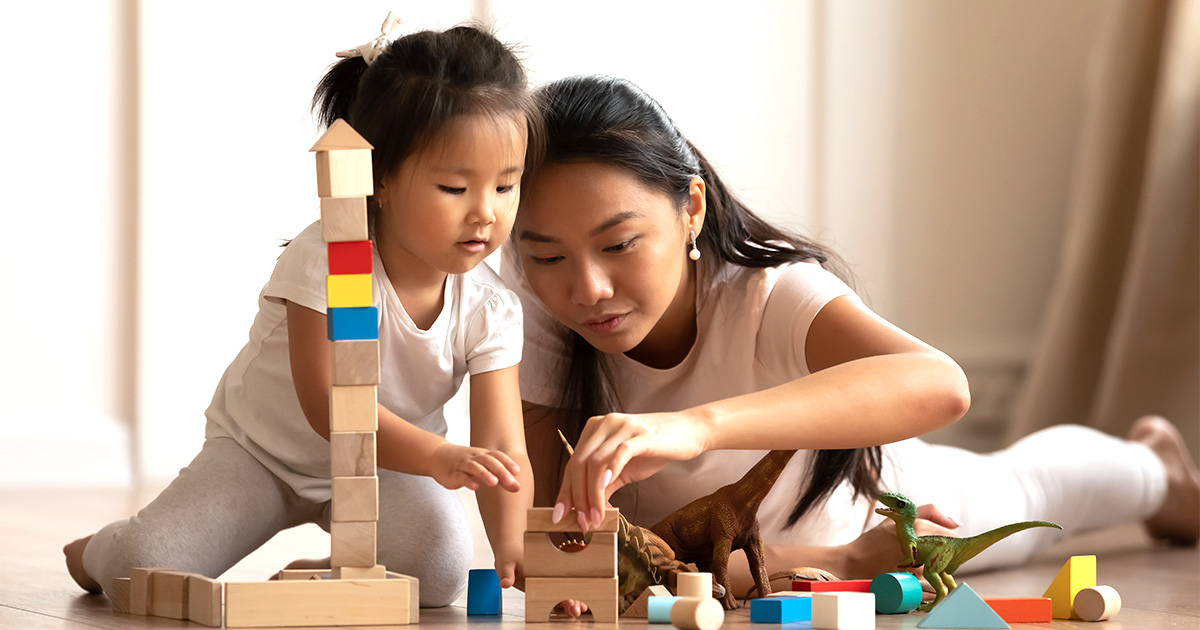- 855.224.8655
- Schedule a Tour

Experiencing your child’s growth is a special journey. For the most part, we know how to teach children basic communication skills such as letters, numbers, or colors. Teaching positive behaviors and social-emotional skills is less clear. Let’s explore some simple ways to nurture your child’s development in those areas.
Be an influencer. You are your child’s biggest role model. Do you notice when your child repeats phrases or uses expressions that you use? Children are remarkable observers. Take advantage of this by modeling positive behaviors for them to imitate.
- Speak your inner thoughts aloud when managing challenges. For example, saying, “I am frustrated because I can’t find a pen. I’m going to take a deep breath and look again.”
- Share something with another person and talk about how that action made you feel.
Focus on connection. Spend quality time with your child. Every interaction strengthens your relationship and holds impressive power to help shape their development. Even in the smallest moments, such as building with blocks together, children learn:
- Resilience by building, rebuilding, and adapting
- Coping with frustration by using calming strategies when things don’t go as expected
Practice during playtime. Opportunities naturally arise to practice positive behaviors and social/emotional skills during pretend play, such as caring for stuffed animals. Read books together and add interaction by asking questions and pointing out characters. Check out these suggestions:
- Grumpy Bird by Jeremy Tankard
- In My Heart: A Book of Feelings by Jo Witek
- Breathe Like a Bear by Kira Willey
- The Most Magnificent Thing by Ashley Spires
Develop purposeful routines. Consistency and repetition are formed by engaging in routines. Doing so offers children feelings tied to safety and security that naturally increase positive behavior. Empower your child to participate in the routines you have at home, such as setting the table for meals, making a grocery list, or helping with laundry. You can help make their participation successful by using visuals that display the steps in the routine or labels that indicate where to put items.
Notice and acknowledge. Be present when your child engages in positive behaviors. For example, when they share a toy, acknowledge it by saying, “You are sharing with me. Thank you for being so friendly.” Reinforcing positive behaviors increases the likelihood of your child continuing to use them.
All these practices contribute not only to supporting your child’s positive behaviors but also to their success in school. When children are equipped with strong social and emotional skills, they can focus on learning.
For more ideas, explore offerings from the Zero to Three Organization and NAEYC (National Association for the Education of Young Children).
